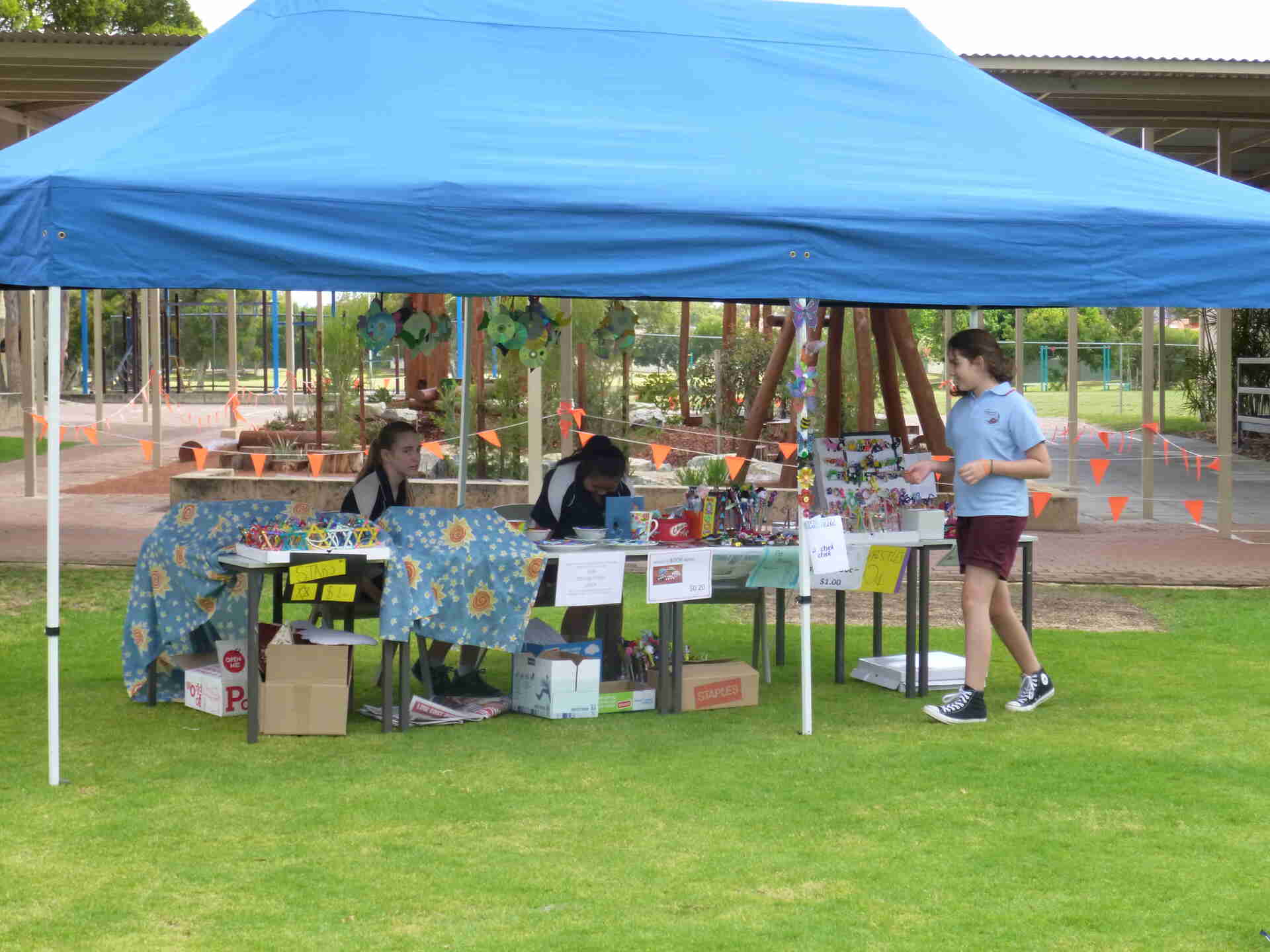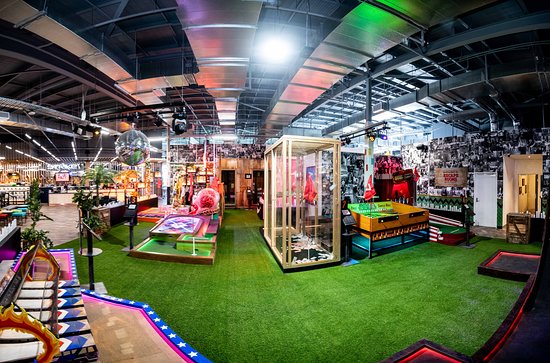Students from Year 4 to Year 6 were involved in the pilot program of Lego EV3 Mindstorm Robotics, in Term 3. Students worked in pairs with their EV3 controller, learning about the basic controls and coding principles of the Mindstorm software, in addition to using skills associated with investigative, persevere with trial-and-error experiments, brainstorming for solutions and problem-based learning.
The sessions seek to give students experience and access to a much broader set of skills and perspectives such as;
- Programming is Precise and if you want a robot to do something, you need to communicate that idea with mathematical and logical precision, or it won’t quite be what you intended.
- Sensors, Programs, and Actions Data from sensors gives a robot information about its environment. A program uses that data to make decisions, and the robot acts on those decisions. Data underlies the core of the entire process.
- Make Sense of Systems to understand the way something works, construct a mental “model” of it in your head that captures the important features and rules of the system. This helps you make sense of it, and also gives you a tool to “play out” (similar) new scenarios in your head to predict what would happen.
- Break Down Problems and Build Up Solutions to solve a difficult problem, try breaking it down into smaller problems. Then, solve the smaller problems, building up toward a solution to the big problem.
- Computational Thinking Applies Everywhere as these skills–mathematical & logical clarity, using data, systems thinking with mental models, problem solving–are key to solving problems in the world.
Using laptops and the Lego Mindstorms robots, students were asked to complete a variety tasks whilst learning about basic programming. The programming itself was based on Lego’s easy understand computer program, whereby students intuitively use the simple ‘drag and drop’ icons to form their code.
The complexity of the tasks increased as students progressed through sessions involving the EV3’s programming language to move their robot around the floor using the properties of the ‘Move Steering’ block. They learnt about the ‘loop’ structure as well as building on their knowledge of geometric shapes. The Sound, Display and Brick Status Lights were then introduced, both as a way to personalise the robot, but also to help debug programs. The concepts of sensors were introduced and the Ultrasonic and Colour Sensors were used to assist the robot with navigation. Students gave their robot the intelligence necessary to make decisions for itself through work with sensors and through the introduction of a new programming concept of formulating conditional statements (the Switch Block).
A new EV3 Robotic session has been started in Term 4, 2016.
B. Combes
Deputy Principal/STEM teacher
GALLERY
Term 3 Images and Video Clips
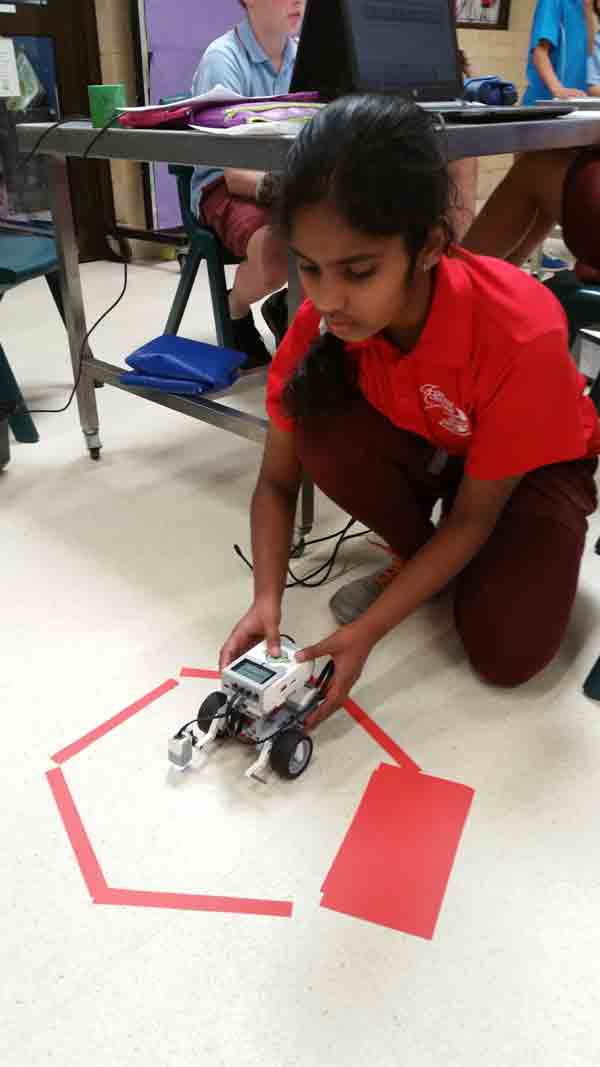

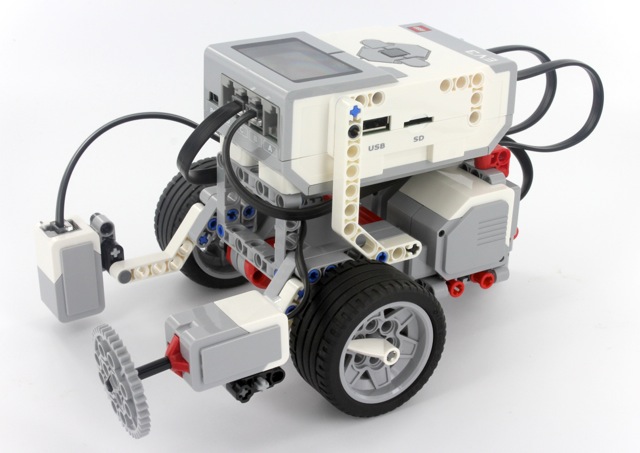
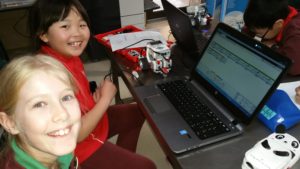
Rebecca and Tiarni working on the coding for the EV3
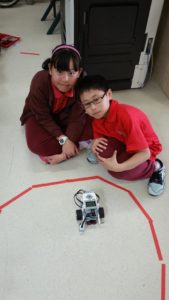
Ivan and Rachel testing their conditional statements
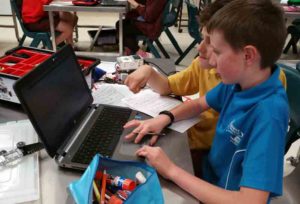
Lachlan and Marc working out the coding required for the EV3 task

Running loop programs with colour sensor
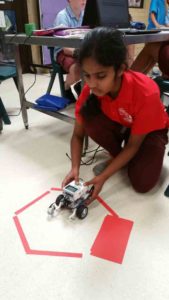
Nimmi testing her programming skills with the loop statement









